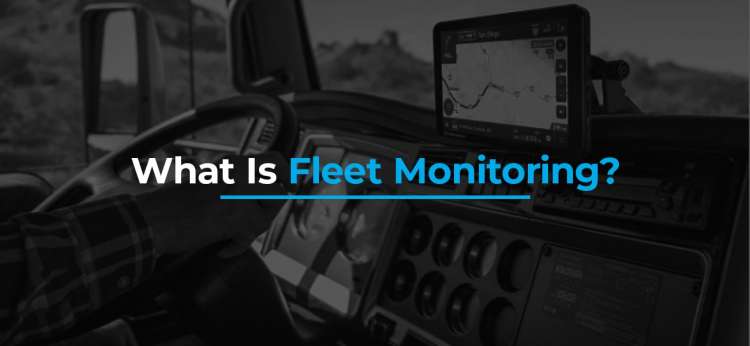How To Improve Your Fleet’s Pre-Trip Inspections
Pre-trip inspections are an essential and regular part of your fleet's operation. Inspections play a huge role in the safety of your drivers and vehicles as well as your overall efficiency. Learn more about why you should make an effort to improve daily vehicle checks and how you can adopt pre-trip inspection best practices today.
What Are Pre-Trip Inspections?
A pre-trip inspection is the rigorous examination of a vehicle before it hits the road each day. Federal standards require drivers to inspect their vehicles and confirm every system is working properly. These inspections include everything from the rig's lights to the engine itself. Pre-trip inspections can take anywhere from 30 minutes to an hour.
Why Should You Improve Your Inspections?
A strong pre-trip inspection routine is critical to the success of your fleet. While some may see inspections as a time-consuming task before the real work of hauling starts, these checks give you, your fleet, and your drivers numerous advantages in both the short term and the long haul:
- Ensure Vehicle and Driver Safety: When your drivers regularly complete pre-trip inspections, they're more likely to notice potential issues before they become massive problems. A driver who is aware of their vehicle's typical condition will be alert to changes or damage that could pose a risk to safety and performance. This simple step is an effective and low-cost part of preventive maintenance and could extend your fleet's life span.
- Improve Efficiency: Taking time at the start of a trip to ensure the vehicle is prepared will help drivers reach their destinations on time and boost productivity. A working vehicle is an efficient vehicle — a truck broken down on the side of the road is not. Daily checks allow drivers to minimize downtime and meet their deadlines.
- Reduce Costs: Pre-trip inspections reduce costs across the board. Catching problems quickly will reduce the price of expensive repairs, replacements, and downtime later on. When drivers ensure their vehicles are in good condition each day, you'll see a decrease in costs associated with violations, fines, accidents, and more.
- Decrease Risk of Accidents: Safety is paramount for your fleet. Comprehensive pre-trip inspections evaluate every system and safety feature to ensure top performance and decrease the accident risk for drivers, vehicles, and others.
How to Improve Pre-Trip Inspections
Now that you know how daily inspections can benefit your fleet, you might be wondering how your drivers can get the most out of these checks. Here are a few ways to improve pre-trip inspections to get real results.
Establish Driver Training and Education Programs
Drivers play the central role in every pre-trip inspection. They're responsible for preparing their vehicle and signing off on its condition each day. While you might have the most comprehensive inspection plan in the world, it won't mean anything unless the driver knows how to complete it.
Include pre-trip inspection education in your initial driver training programs. This training will ensure everyone is on the same page concerning vehicle inspections and what your company expects. Drivers will learn more about how to conduct the check and complete the relevant paperwork. Giving your drivers the tools and support they need will make a big difference in their ability to succeed.
Institute a Consistent Company-Wide Policy
A consistent policy is a reliable one. When you institute a company-wide inspection policy for your fleet, you clearly communicate the expectations and requirements you have for your drivers and vehicles. Such clear standards will eliminate doubt and confusion, ensure uniform records and reports, and simplify a previously complicated step for drivers.
Create a Thorough Checklist
A checklist is a simple and effective way to ensure your drivers properly complete their pre-trip inspections. A physical or digital checklist prevents drivers from overlooking important components, making mistakes, or cutting corners.
A comprehensive checklist should consider all angles and parts of the vehicle, including:
- Overall vehicle condition
- Damage or changes
- Tires
- Engine compartment
- Fuel tanks
- Cab
- Fluids
- Air pressure
- Breaks
- Odometer readings
- Lights
- Power steering
- Battery
- Safety features
Keep Detailed Records
Chances are there will come a time when someone wants to review your pre-trip inspection records, whether they're regulatory officials or your own team. Documentation is useful for your internal records and maintenance as well as administrative accountability and avoiding fines. Teach your drivers to accurately create and keep detailed records of their previous pre-trip inspections.
Don't Make Assumptions
Don't make assumptions about any aspect of pre-trip inspections or your fleet. Take proactive steps to train your drivers and stay up to date with federal regulations to remain compliant. You can get ahead of the game with fleet management software that allows you to consolidate every step of pre-trip inspections into one place. Technology improves connections between drivers and management, leading to faster inspections and fewer errors.
Improve Pre-Trip Inspections with Rand McNally
At Rand McNally, we can help you get the most out of your pre-trip inspections. Contact us online to request pricing or a demo today.
Contact Rand McNally
Request Pricing for Fleet Solutions
We're looking forward to talking with you. Please fill out the form to get started.
Or call us:
+1 (800) 789-6277 (Fleet management, ELD, Asset tracking, Navigation)
+1 (800) 234-4069 x2 (MileMaker/IntelliRoute)
If you are an existing customer and need assistance, please contact your Client Success rep or email fleetsupport@randmcnally.com.
This form is for business-to-business transactions only. It is not for personal consumer use.


